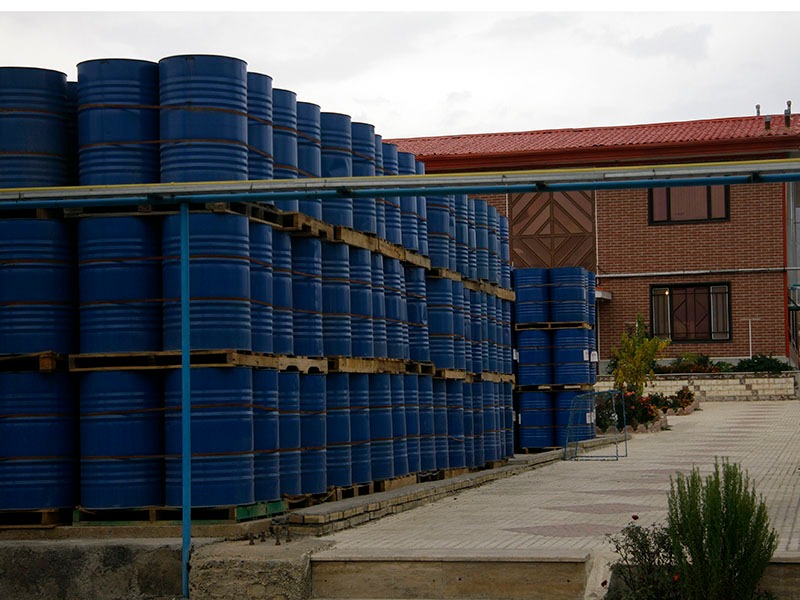Description of methyl acetate
Methyl acetate, also known as MeOAc, acetic acid methyl ester or methyl ethanoate, is a carboxylate ester with the formula CH3COOCH3. It is a flammable liquid with a characteristically pleasant smell reminiscent of some glues and nail polish removers. Methyl acetate is occasionally used as a solvent, being weakly polar and lipophilic, but its close relative ethyl acetate is a more common solvent being less toxic and less soluble in water. Methyl acetate has a solubility of 25% in water at room temperature. At elevated temperature its solubility in water is much higher. Methyl acetate is not stable in the presence of strong aqueous bases or aqueous acids. Methyl acetate is VOC exempt.
Methyl acetate is an aliphatic ester that can be prepared via carbonylation of dimethyl ether over zeolites. MA is formed as a by-product during the preparation of polyvinyl alcohol from acetic acid and methanol.
Its IR spectra in the vapor phase and in solution form (in CS2 and CCl4) have been reported. It can be synthesized from dimethyl ether via carbonylation in the presence of halide-free catalysts based on zeolites. It has also been reported to be formed during the synthesis of poly(vinyl) alcohol (PVA). It undergoes transesterification reaction with n-octanol in the presence of Amberlyst 15 catalyst to afford octyl acetate and methanol.
Application
Methyl acetate may be used for the preparation of fatty acid methyl esters and triacetin from rapeseed oil via non-catalytic trans-esterification reaction under super-critical conditions.
Methyl acetate may be used in the following:
As acyl acceptor in the preparation of biodiesel.
Synthesis of ethanol.
Preparation of n-butyl acetate, via transesterification reaction with n-butanol in the presence of acidic catalysts.
It may also be used as a precursor in the synthesis of the following:
- acetic anhydride
- methyl acrylate
- vinyl acetate
- ethyl amide
Methyl acetate is also used for:
- Colors and coatings:
Soluble methyl acetate is a high evaporation rate, so it can be used in the production of all types of early drying paints and wood coatings (varnishes), industrial applications, automobile industry, vehicles and marine equipment, cans and more. The lack of volatile organic matter in methyl acetate has increased its use in the production of colors and coatings. It is also very suitable as a solvent in nail polish. - Clean the surfaces:
used as a solvent in surface cleansers due to its water-repellent and rapid drying properties. Because methyl acetate is rapidly converted to steam. Pollutants do not absorb air to the desired level. In addition, the methyl acetate water-repellent properties make it suitable for cleaning metal surfaces before painting and preparing them for marine applications and moisture-sensitive equipment. - Other Use:
also used as a solvent in the production of quick drying adhesives. The adhesives are produced by dissolving rubber and resin in methyl acetate. When the adhesive is applied on the surface, methyl acetate evaporates rapidly and causes the adhesive to harden and adheres to the surface. Methyl acetate is also used in cosmetics, personal care products such as perfume, nail polish and lacquer cleaner.
Handling
Hazards & Toxicity
has an NFPA health rating of 2 and can cause temporary incapacitation or residual injury. If inhaled or ingested, headaches, dizziness, drowsiness, and fatigue can occur. Contact with the eyes can cause irritation. It has a flammability rating of 3 and can be ignited under most ambient temperature conditions residing from its low flash point of -10 °C. When ablaze, methyl acetate emits heavy, irritating, and toxic fumes that can travel considerable distances. These vapors are also explosive and risk bursting if able to return to the source of ignition.
Methyl acetate’s reactivity is aligned with other compounds of the ester group. In the presence of strong bases or acids such as sodium hydroxide or hydrochloric acid and sulfuric acid at high temperatures, it is converted back into methanol and acetic acid.
Storage & Distribution
Methyl acetate should be stored in a storage area specialized for flammable liquids, tightly enclosed in drummed containers such as iso tanks made of stainless steel, aluminum, or carbon steel. This area should be cool, dry, and well-ventilated, out of direct sunlight, heat, open flames, and away from strong acids and alkalis, nitrates, and strong oxidizers.
A bulk solvent exporter would normally distribute in bulk vessels or tank trucks. For transportation purposes, methyl acetate is classed as a flammable liquid with a fire hazard rating of 2 and is a packing group 2.
Safety & Procedures
Personal protective equipment should be worn at all times when handling methyl ethanoate to prevent contact with the skin, eyes, nose and throat. If contact is made with the skin, immediately wash the contaminated area and seek medical attention. If contact is made with the eyes, immediately wash with large amounts of water. If swallowed, seek medical attention immediately.
When opening containers or moving opened containers, they must be fully resealed and maintained in an upright position to prohibit leakages.
If methyl ethanoate is spilt, isolate the leak for at least 50 meters in all directions. In the event of a fire, water extinguishers may be ineffective due to methyl acetate’s low flashpoint. Foam extinguishers that are alcohol-resistant are suitable for small and large fires.
Packaging
200kg New and Reconditioned Steel Drum
Specification
| No. | Test | Method | Value |
| 1 | Appearance | Visual Inspection | Colorless, Clear Liquid |
| 2 | Color, Pt-Co unit | ASTM D1209a | 10 (Max) |
| 3 | Purity, wt % | ASTM D3545 | 99 (Min) |
| 4 | Water, wt % | ASTM E1064 | 0.3(Max) |
| 5 | Acidity as Acetic Acid, % wt | ASTM D1613 | 0.01 (Max) |
| 6 | Density, g/cm3, at 20°C | ASTM D1298 | 0.930-0.935 |
| 7 | Distillation range 760 mm Hg, 0C | ASTM D1078 | 56 – 57 |


